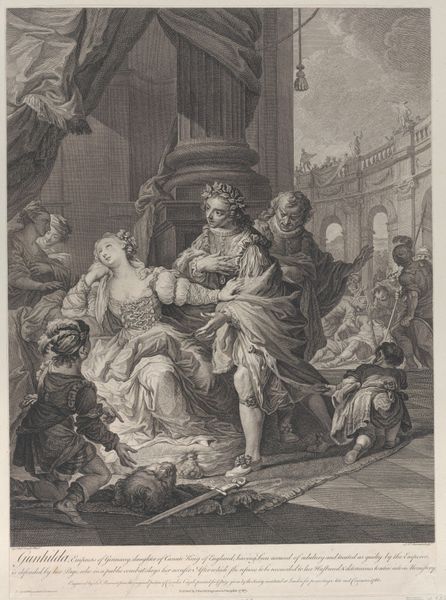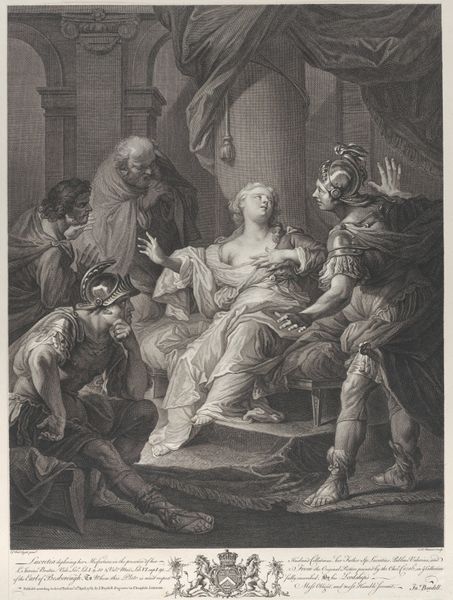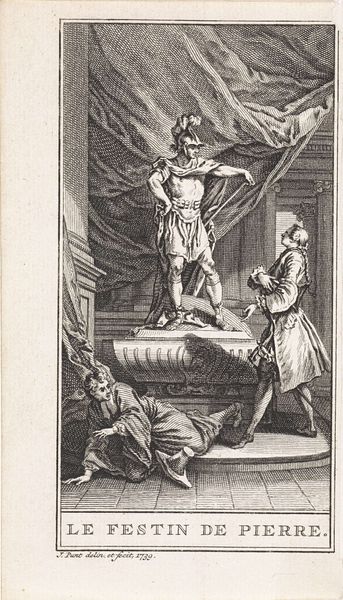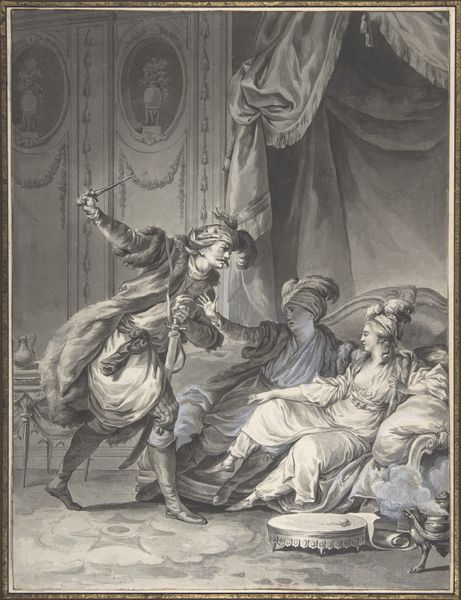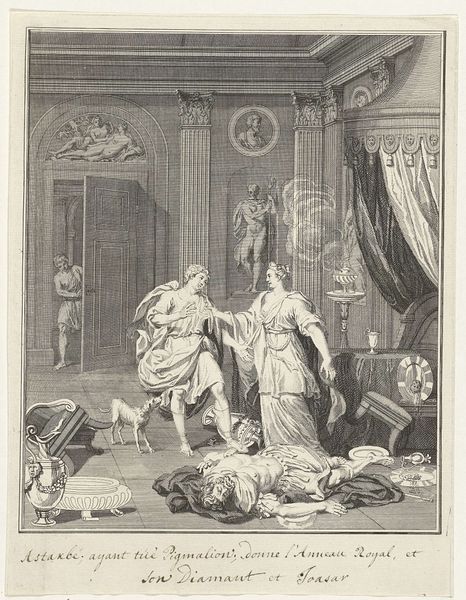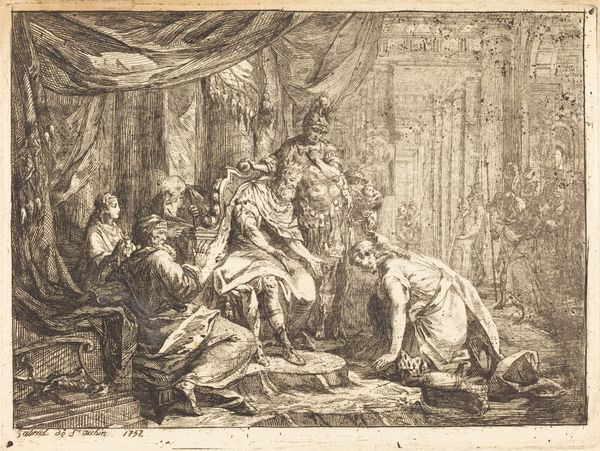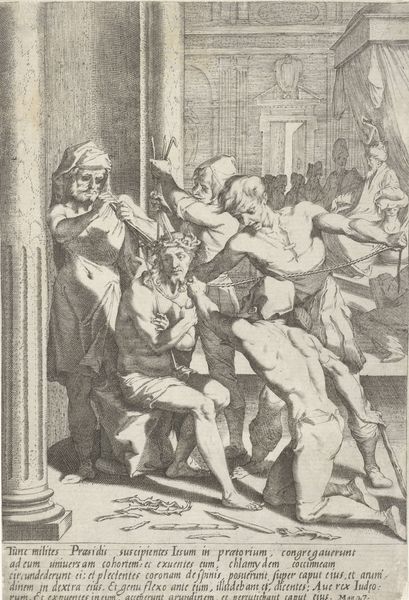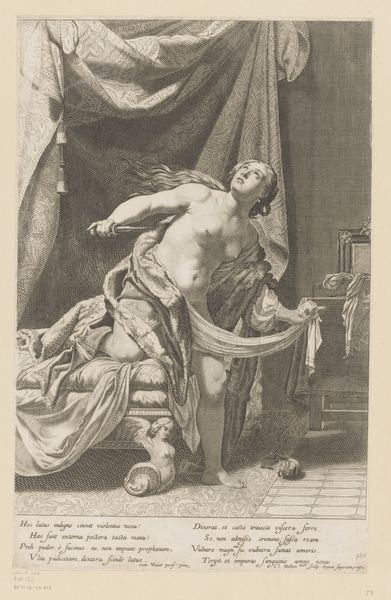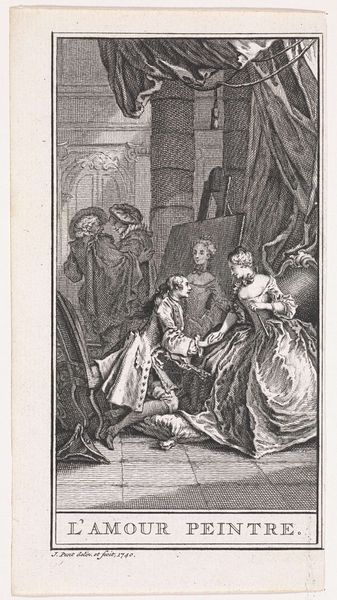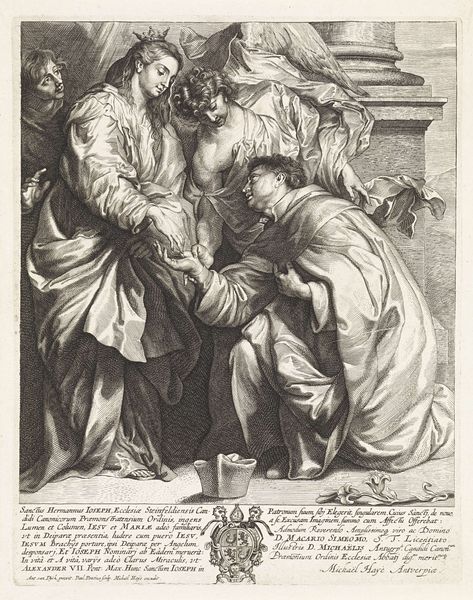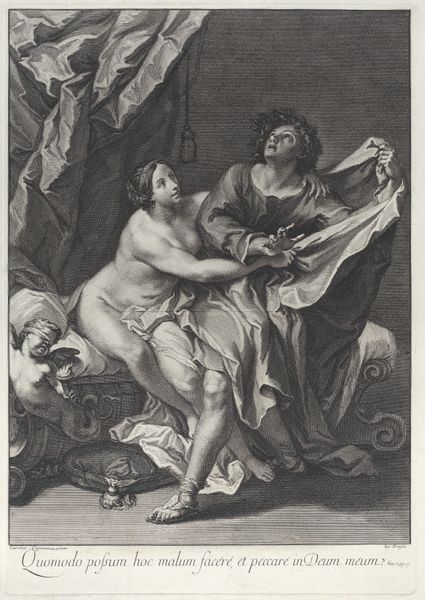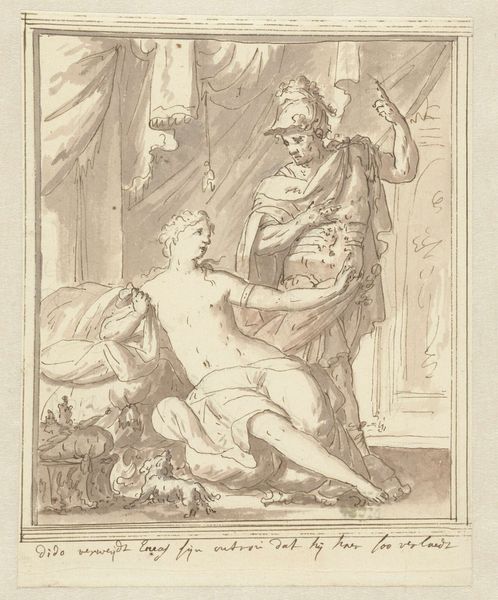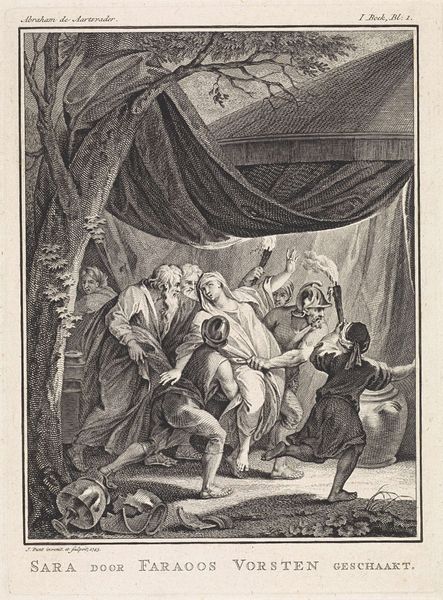
Jael hammering a tent peg into the temple of the sleeping Sisera, to the right a servant hides behind a curtain; from the series of 112 prints of the sacred history, after the painting by Giovanni Battista Pittoni 1725 - 1744
0:00
0:00
drawing, print, etching
#
drawing
#
narrative-art
#
baroque
# print
#
etching
#
history-painting
Dimensions: Sheet (Trimmed): 16 7/8 × 10 7/8 in. (42.8 × 27.6 cm)
Copyright: Public Domain
Editor: This print, made sometime between 1725 and 1744 by Pietro Monaco, depicts Jael hammering a tent peg into Sisera's head. The scene has this rather grim, dramatic feel, amplified by the stark contrast in the etching. What really strikes me is the sheer...violence portrayed here. What do you see in this piece? Curator: It’s true, isn't it? Monaco captured Pittoni's original painting effectively. And that violence... it isn’t gratuitous but significant. Jael is a powerful figure. Consider how often female figures in art, particularly of this era, are passively depicted. But here? She is the instrument of divine justice. Editor: So you see her act as less brutal and more…symbolic? Curator: Absolutely. Ask yourself, what does the tent peg represent? It is domestic, a tool of the household, weaponized. She reclaims power by inverting expectations, becoming the active agent of her people's liberation. What emotions do you read on Jael’s face? Is it hatred? Revenge? Or determination? Editor: Determination, I think. There’s a grim focus in her eyes, no real sense of… enjoyment. Just a task completed. Curator: Precisely. Now look at Sisera. How is he positioned? Vulnerable, asleep. His power, his military might, rendered useless by Jael’s cunning and courage. This becomes a powerful statement about overcoming tyranny, using whatever means are available. The etching allows us to revisit this familiar story, again and again, and confront uncomfortable aspects of leadership, heroism, and cultural values of justice. Editor: It’s interesting to consider the nuances, especially with Jael subverting expected gender roles of that time. It makes you think about who gets to be a hero and what actions are deemed justifiable. Curator: It does indeed.
Comments
No comments
Be the first to comment and join the conversation on the ultimate creative platform.
